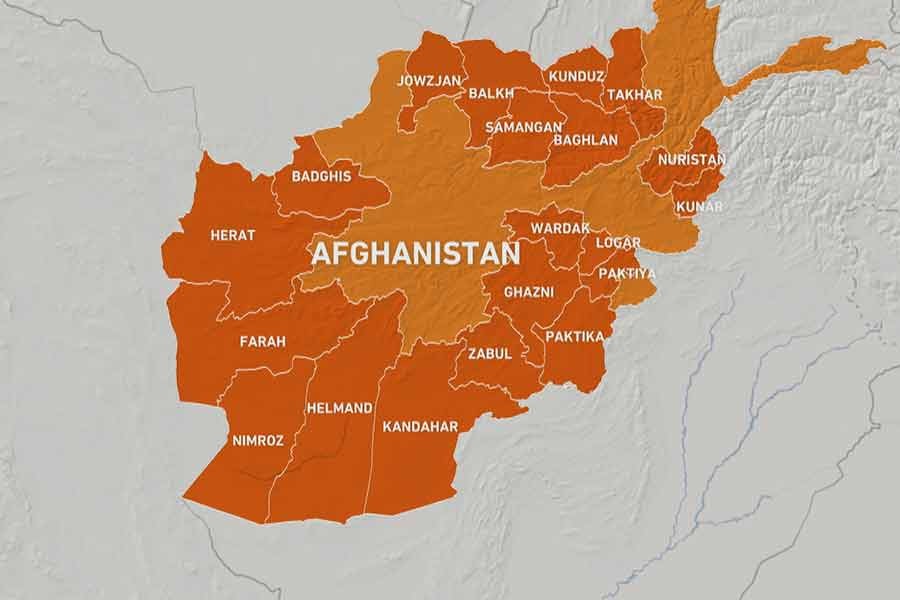How is the US-brokered peace process progressing in Afghanistan? And once all the US troops are withdrawn from Afghanistan by early September this year, as scheduled, what is the prospect that peace in that war-ravaged country will finally arrive? Will the incumbent US-backed government of President Ashraf Ghani and the Taliban bury the hatchet as envisaged in the peace plan and form a coalition, coexist peacefully and together build a democratic Afghanistan?
Looking at the reality on the ground, such expectations seem to be a pipe dream.
What is happening at the moment? In this context, consider what the American web-based news blog on war on terror, the Long War Journal says about the latest situation in Afghanistan. In a recent report it says that out of 398 districts in Afghanistan, the Taliban now control 107, the government 92, while 199 districts remain contested between the government and the Taliban. However, population-wise, the government in Kabul can claim a better position in that about 12 million people live in areas under its control. The Taliban have, on the other hand, only six million people in territories where they rule. And in the contested districts live 15 million people. Should then one conclude that the Kabul government is better placed to dictate terms and thus to deal with its rival, Taliban, from a position of strength? Not in the least. In fact, the government controls mostly the urban centres while the rest of the country in reality is under the de facto control of the Taliban. Though the government in Kabul has been trying to put up a brave face all through, the reality is quite to the contrary. In fact, the frequency of Taliban attacks has increased manifold with accompanying rise in the number of casualties while the Taliban are gaining control of new areas about every day since US president Joe Biden announced his troops' withdrawal deadline of September 11 from Afghanistan.
Meanwhile, in the midst of the growing fear of a Taliban walkover once the last American soldier leavers Afghanistan, the country's president visited Washington recently. Evidently, his objective was to garner continued political support and military aid even after US's physical presence in his country comes to an end. But what US president Joe Biden told him cannot be said to have been very reassuring. Of course, the American president did not shift from his promise of extending continued support to Afghanistan. But in the same breath, he did not also fail to remind his guest that from now on the Afghan people will have to decide their own fate. It is clear that the Americans want to get rid of the Afghan baggage as soon as possible. That gives us a glimpse of what is in store for this war-torn nation of over 38 million. The Bush administration of America declared war against Afghanistan in the wake of September 11's terror attack on its soil not with a great mission to oust the then-Taliban government because it was dominated by Islamic fundamentalist mullahs and that they gave shelter to al-Qaeda chief, Osama-bin-Laden and who in the Americans' view was the mastermind behind the September 11 terror attack. The irony is it is the Americans who had earlier recruited the Taliban fighters, gave them training in modern guerrilla warfare, supplied them with sophisticated weapon so they may drive the communist Soviets out of Afghanistan. And the Islamist jihadists that America and its Western allies now abhor so much proved to be so useful against the Soviets in those Cold War years! The US-trained Taliban fighters did complete their mission of freeing Afghanistan from the clutch of the Soviets who invaded the country in the late 1970s (December 1979) and kept it under their occupation until February 1989.
Two years later the Soviet empire itself collapsed under its own weight leaving America as the world's sole superpower.
Meanwhile, US-installed Taliban mullahs started to conduct their affairs in their own way. But the implication of this change in Afghanistan was far-fetched. America and its allies soon began to feel the impact of this change. But they should not have been surprised to see the fallout of what they had done in Afghanistan.
The Taliban were tolerated, rather pampered, so long as the Soviets were on the scene. Now as the Soviets vanished after December 1991, so did the importance of the Taliban mullahs to the USA. Now in the post-Soviet world, there arose the need for redrawing the global war front by superpower America. Unlike the Cold War era physical frontline of East versus West, now was devised on the intangible frontier of ideologies: Islam and Confucianism on the one side and the Western Christian civilisation, on the other. Small wonder that the Taliban was toppled by the US.
Meanwhile, two decades have passed. But the Taliban could not be vanquished. The meaningless, endless war drags on. Afghanistan, for America, has become another Vietnam. The events leading up to the final moment of withdrawal from Afghanistan bear a strange similarity with the scenes that preceded the day America airlifted its last troops out of then South Vietnamese capital of Saigon 41 years ago! Those old enough may remember how Nguyen Cao Ky, prime minister of the US-backed Saigon government, was trying to climb up the ladder suspended by a rope from a US-military helicopter sent to evacuate the last US citizen from Saigon.
What will the last day of American presence in Afghanistan, or in Kabul, to be specific, look like?
Let us hope for the better.


